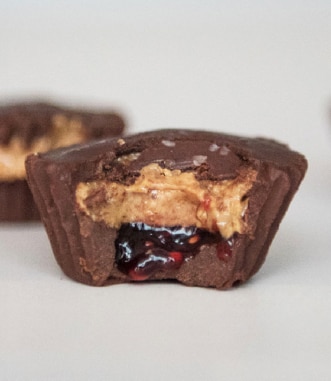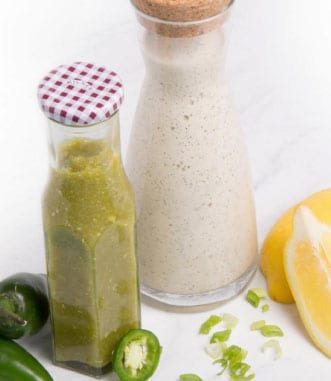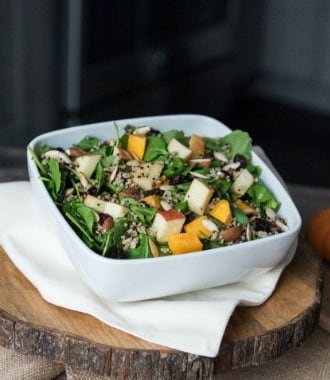Wellness
Combine these vitamins and minerals
Jun 13, 2022 • 2 min
Combining foods that contain specific nutrients can provide greater benefits than if consumed alone.
Calcium and Vitamin D
Vitamin D is a fat-soluble vitamin that helps the body absorb calcium, a mineral that’s crucial for bone health. Together, vitamin D and calcium help keep bones strong and protect older adults from osteoporosis, a bone condition that causes the bones to become thin, weak, brittle and more likely to break.
Where to find them: Calcium is mainly found in dairy products, such a cow’s milk, yogurt and cheese. It’s also found in kale, broccoli, Chinese cabbage, salmon and sardines. Vitamin D isn’t found in many foods naturally, but many dairy products are fortified with the vitamin. The
best natural sources of vitamin D include fatty fish, like salmon and tuna. Egg yoks, cheese, beef liver and mushrooms grown under ultraviolet (UV) lights also contain a small amount of vitamin D.
Vitamin B12 and folate
Folate, a vitamin that has been shown to reduce the risks of birth defects when taken during pregnancy, relies on vitamin B12 for absorption. These two B vitamins also work together to help cells divide and replicate. In addition, the combination of vitamin B12 and folate can help your body metabolize homocysteine, an amino acid the body makes. High homocysteine levels in the blood can harm the lining of the arteries and make your blood clot more easily than it should, which can lead to a heart attack, stroke or pulmonary embolism.
Where to find them: Vitamin B12 is found in foods that
come from animals, such as eggs, meats and milk. Natural sources of folate, on the other hand, come from plant-based foods, including green leafy vegetables, nuts and legumes (like beans or peas). What’s more, all cereals in the U.S. are fortified with folate and many are also fortified with vitamin B12.
Vitamin C and nonheme iron
Ascorbic acid, or vitamin C, can enhance the absorption of nonheme (plant) sources of iron. The body needs iron to grow, develop, make connective tissue and produce certain hormones. Iron is also needed to make hemoglobin, a protein on red blood cells that transports oxygen from the lungs to the rest of the body, and myoglobin, a protein that delivers oxygen to the muscles.
Where to find them: Nonheme sources of iron include dried beans, nuts, vegetables, including cooked spinach and raw asparagus, and fortified grain products. The body is better able to absorb nonheme iron when it’s paired with foods and beverages that contain vitamin C, including citrus fruits and 100% juices, strawberries, cantaloupe, sweet peppers, broccoli and tomatoes. Consuming nonheme iron with meat, poultry or seafood can also help your body absorb this type of iron better.
Eating a balanced diet can help ensure you get all the vitamins and minerals you need to stay healthy. Keep in mind that taking in your vitamins and minerals from food sources tends to be best in many cases. However, if you have trouble meeting your nutrient needs through foods alone, a supplement may help fill dietary gaps.
Sources
“Iron,” Office of Dietary Supplements, National Institutes of Health. Web. 4 Oct 2018. https://ods.od.nih.gov/factsheets/Iron-HealthProfessional/
“Food sources of iron,” Dietitians of Canada. Web. 4 Oct 2018. https://www.dietitians.ca/Downloads/Factsheets/Food-Sources-of-Iron.aspx
“Calcium,” Office of Dietary Supplements, National Institutes of Health. Web. 4 Oct 2018. https://ods.od.nih.gov/factsheets/Calcium-HealthProfessional/
“Vitamin D,” Office of Dietary Supplements, National Institutes of Health. Web. 4 Oct 2018. https://ods.od.nih.gov/factsheets/VitaminD-HealthProfessional/
“What is vitamin D?” Academy of Nutrition and Dietetics. Web. 4 Oct 2018. https://www.eatright.org/food/vitamins-and-supplements/types-of-vitamins-and-nutrients/what-is-vitamin-d
“Folate,” Office of Dietary Supplements, National Institutes of Health. Web. 4 Oct 2018. https://ods.od.nih.gov/factsheets/Folate-HealthProfessional/
“High homocysteine level: How it affects your blood vessels,” American Academy of Family Physicians. Web. 4 Oct 2018. https://familydoctor.org/high-homocysteine-level-how-it-affects-your-blood-vessels/
“Nutrition’s dynamic duos,” Harvard Health Publishing. Web. 4 Oct 2018. https://www.health.harvard.edu/newsletter_article/Nutritions-dynamic-duos



